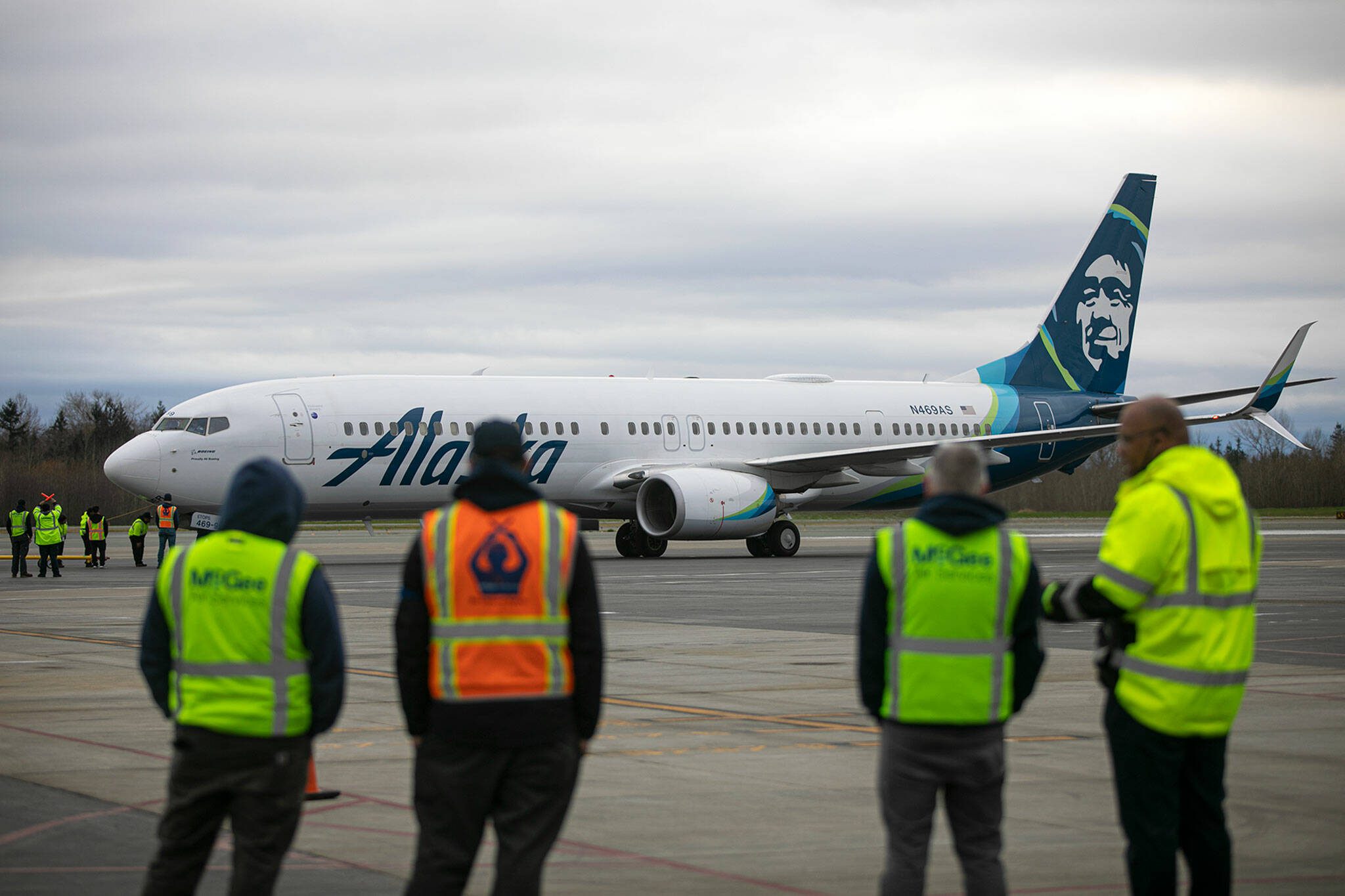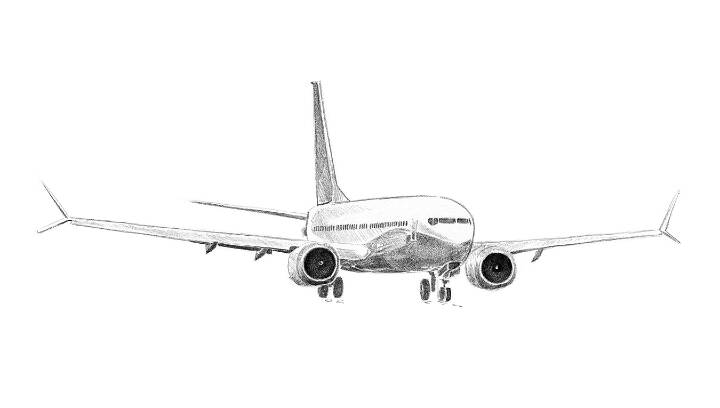By Niraj Chokshi / © 2024 The New York Times Company
More than a decade ago, executives at Boeing made a pivotal decision: To keep up with the company’s main rival, Airbus, they gave up on the idea of developing a new airplane and raced to update the 737, the company’s most popular jet.
That effort culminated in the 737 Max, which had two fatal crashes in 2018 and 2019 and attracted more scrutiny this year when a panel blew out of one of the planes during a flight in January. The jet’s troubles have left Boeing behind Airbus in the global market for single-aisle planes, which it once dominated.
Now, Boeing, which is expected to appoint a new CEO by the end of the year, has to make another critical choice: When should it develop its next brand-new plane?
If the company missteps, it could spend billions of dollars and still lose market share to Airbus, which is based in Toulouse, France. Both manufacturers also face a distant but rising threat from China and growing pressure to cut planet-warming emissions.
“That will be one of the most important decisions for whoever steps into the CEO role,” said Ken Herbert, an aerospace and defense analyst at RBC Capital Markets. “Their legacy is going to be defined by what they do with the portfolio.”
Boeing declined to comment for this story.
Commercial planes are generally divided into two groups. Narrow-body, or single-aisle, planes like the 737 typically carry 100 to 200 passengers on domestic U.S. flights. Wide-body, or twin-aisle, planes can take more passengers farther — from, say, New York to London or Tokyo.
Boeing and Airbus sell many more narrow-body jets, but airlines are increasingly demanding larger versions of those planes because of limited gates and runway capacity at many airports and growing demand in travel.
The Max was designed to compete against the Airbus A320neo family of planes. Experts say the verdict in that contest is clear: Boeing lost. Airlines around the world have ordered many more of the Airbus jets, especially the largest, the A321neo. The European company’s lead was solidified after the Max crashes — which experts traced to poor design and engineering decisions — and the ensuing 20-month global ban on the plane.
In 2019, for the first time, Airbus had more passenger planes flying around the planet than Boeing did, according to Cirium, an aviation data provider.
The Max remains popular, especially with airlines in the United States, which have a long history of flying Boeing planes. The company is working to fill about 4,300 orders for the Max, a backlog worth hundreds of billions of dollars. But Airbus has sold far more of the A320neo family, with more than 7,100 outstanding orders for the three variants of that plane.
Boeing still leads when it comes to larger, twin-aisle planes, but Airbus’ dominance in the lucrative single-aisle market could prove self-reinforcing, experts said. With more sales coming in, Airbus can invest more in research and development. With more planes flying, it can earn more from selling spare parts and providing services.
“The entire time Boeing has been running around putting out fires, Airbus has just been running their business,” said Ron Epstein, an aerospace and defense analyst at Bank of America.
Boeing has also squeezed all it can out of the 737, which debuted in the late 1960s. In developing the Max, the company pushed that plane’s structure to its limits. Its next plane is likely to be one it builds from the ground up, aviation experts said.
It was not clear what that new jet might look like or when it might arrive.
Dave Calhoun, Boeing’s CEO, has said the company won’t roll out a new plane until the mid-2030s — partly because such a monumental effort would be worthwhile only when companies such as General Electric, Rolls-Royce and Pratt & Whitney introduced more efficient engines.
But building a new plane could help Boeing fill an important gap in the market for larger-narrow-body jets, some experts said.
Airbus’ most popular plane, by far, is the A321neo, which has the most seats and can travel the farthest of the company’s three neo models. Boeing’s answer to that plane, the 737 Max 10, does not fly quite as far and has yet to be approved by regulators.
Epstein estimated last year Boeing could sell 6,500 larger single-aisle jets to airlines, mostly to replace smaller narrow-body planes. That jet could be developed in seven to eight years for an investment of up to $20 billion, with Boeing generating at least five times as much in gross profits, he said at the time.
Some aviation experts also argue Boeing and Calhoun have been too cautious about committing to a new plane, which they said could be more efficient even without waiting for new engines. Newer materials, different kinds of wings and other advancements could help Boeing achieve meaningful improvements, they said.
“If you present the airlines with a reasonably good plane, they’ll take it,” said Michel Merluzeau, an analyst at AIR, an aerospace and defense consulting firm.
The longer Boeing takes to build a new plane, some said, the longer Airbus has to expand its lead. And while new engines promise big gains in efficiency, they may fall short in practice. Airlines may also be slow to buy planes powered by those engines, especially after problems with the current generation’s engines, which have needed more and longer repairs than expected.
But others said it could be wise for Boeing to wait. If the company moves too soon, Airbus could swoop in with an even newer, better aircraft.
Most analysts expect Airbus to release a new plane in the middle of the next decade, around the same time that Calhoun has targeted. Aviation experts disagree on whether Airbus would move first or wait to follow Boeing, but say the European manufacturer is well positioned for either approach.
Developing a new plane is a huge undertaking. Unlike wide-body planes, narrow-body jets are sold in larger numbers and, thus, need to be churned out rapidly; Boeing and Airbus aim to produce dozens every month. To accommodate that pace, Boeing will have to develop a complex production system and prepare its suppliers. Airlines will also probably have to be willing to train pilots for a new jet, an expensive and time-consuming process.
Ultimately, any new plane will also have to last for decades, Calhoun said in an interview with Aviation Week, a trade publication, last year.
“Twenty years is a disaster; 30 years is a disaster,” he said. “They’ve got to last 50 years.”
Of course, Boeing would not be starting from scratch. The company and Airbus are constantly developing and issuing new techniques, technologies and tools. Boeing can apply lessons learned elsewhere, for example, from developing the wide-body 787 Dreamliner, which it first delivered to an airline in 2011, or the coming 777X, a more efficient version of an existing wide-body Boeing plane whose wing the company will make in-house with composite materials.
The company is also working on experimental technologies. With NASA, Boeing is developing a longer, thinner wing supported by braces, a design known as the Transonic Truss-Braced Wing. It also maintains a research program known as the ecoDemonstrator, which uses modified planes to test new technologies. Both Boeing and Airbus are also separately experimenting with the use of sustainable fuels, which can be made from used cooking oil, waste, corn and other materials.
Aviation experts said building a new plane could generate new enthusiasm for Boeing after its recent problems.
“If they can make it easier for people to like them, I think they’ll find there is quite a lot of support out there for a new, improved Boeing,” said Rob Stallard, an analyst who covers both Boeing and Airbus at Vertical Research Partners.
This article originally appeared in The New York Times.
Talk to us
> Give us your news tips.
> Send us a letter to the editor.
> More Herald contact information.


























